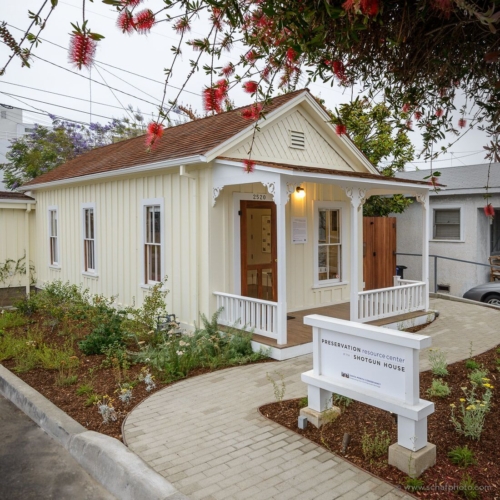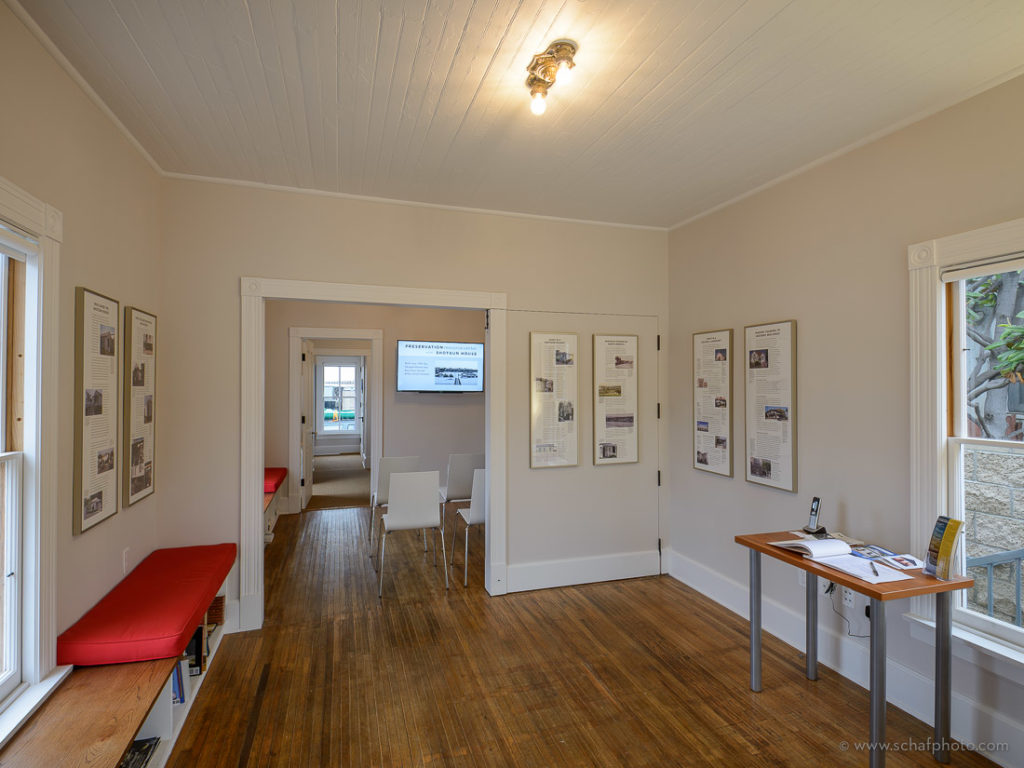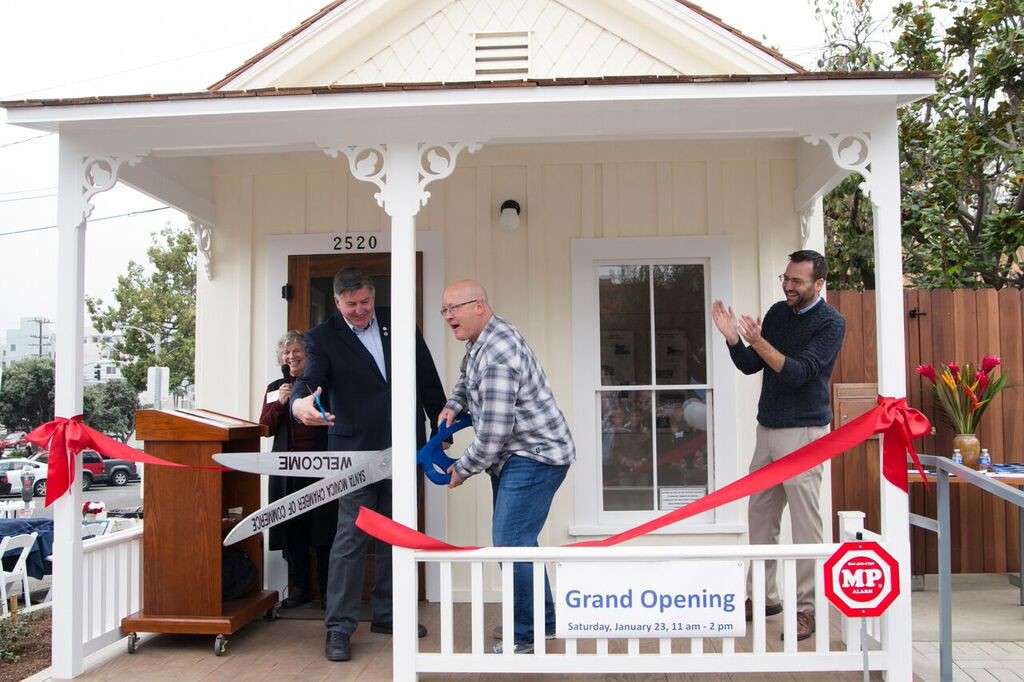Shotgun House

- Known As
- Shotgun House
- Architect
- Unknown
- Built
- 1897
- Designated
- January 11, 1999
The Preservation Resource Center provides residents and visitors with practical, user-friendly information about historic resources in Santa Monica as well as the methods and benefits of preservation. Our Resource Center provides free docent-led tours of the rehabilitated and award-winning Shotgun House, a model for adaptive reuse that showcases an important piece of Santa Monica’s history; hosts preservation webinars; helps homeowners with landmark applications; and serves as an education resource for the community and visitors of all ages. The Conservancy is working to expand programs at the Resource Center this year.
In its first year of operation, our Resource Center welcomed and educated over 1,600 residents and visitors, won prestigious awards, and earned a LEED Gold rating. One sustainable feature of the Resource Center is the Shotgun House Coastal Garden which is filled with drought-resistant native plants such as California fuchsia, red buckwheat, yellow yarrow, and coyote mint.
About the Shotgun House
The Shotgun House was built sometime between 1893 and 1902. It was located at 2712 Second Street in Ocean Park, before being moved to the present location in 2014 for rehabilitation. In the 1890s Ocean Park was being subdivided and settled and was growing fast as a resort area. In Ocean Park’s first phase of development, shotgun houses were built to serve as vacation cottages near the beach. The Shotgun House served as rental housing for almost 100 years, occupied by numerous families who made their livings in a variety of trades.
Architectural historians believe this type of house was first seen in the Caribbean (resulting from a blend of African and European influences). By the early nineteenth century this modest type of structure had become ubiquitous in the rural South and were particularly common as dwellings for African-Americans.
Inexpensive to build, easy to transport and adaptable to diverse purposes, the shotgun style spread across the country during the nineteenth century. Shotgun houses found use during the Civil War as field housing, sprung up in mining towns across the West, sheltered railroad workers laying tracks across the nation, and offered economical shelter for people of limited means in many communities. In Santa Monica and other resort areas, shotgun homes were also useful as vacation cottages.
Our Shotgun House is a good example of the form with three small rooms lined up in a row. Like most shotgun houses, this board-and-batten structure features a covered front porch and a gabled roof. Ornamentation is minimal but the diamond-shaped shingles on the front gable provide a hint of Queen Anne styling. (Originally the house also included some Victorian scrolled brackets on the porch posts.) Though presently enclosed, several sash windows on both sides of the house once provided light and ventilation.
The shotgun house is remarkable for its sheer tenacity. Because many shotgun houses were flimsily built, many did not stand up well to the passage of time. By the mid-twentieth century a number of Santa Monica’s shotgun houses had been deemed unsafe and bulldozed. Many other shotgun houses that were not decrepit were destroyed due to development pressure over the last century. Yet, against all odds, our Shotgun House persisted, and was occupied as a residence until 1996. Facing destruction in 2002, it was moved from its original site and became the focus of efforts by community members and the City of Santa Monica to restore and relocate it.
Over the next sixteen years, the house became the property of the City, and was relocated two more times before a permanent location was found in the parking lot across from Norman Place and the Ocean Park Library in 2014.
Under the guardianship of the Santa Monica Conservancy, an adaptive reuse plan was developed, a lease was negotiated, and funds were raised to sensitively rehabilitate and transform the little shotgun house into a Preservation Resource Center. In January 2016, the Resource Center celebrated its grand opening. (Read about the grand opening in the LA Times.)




